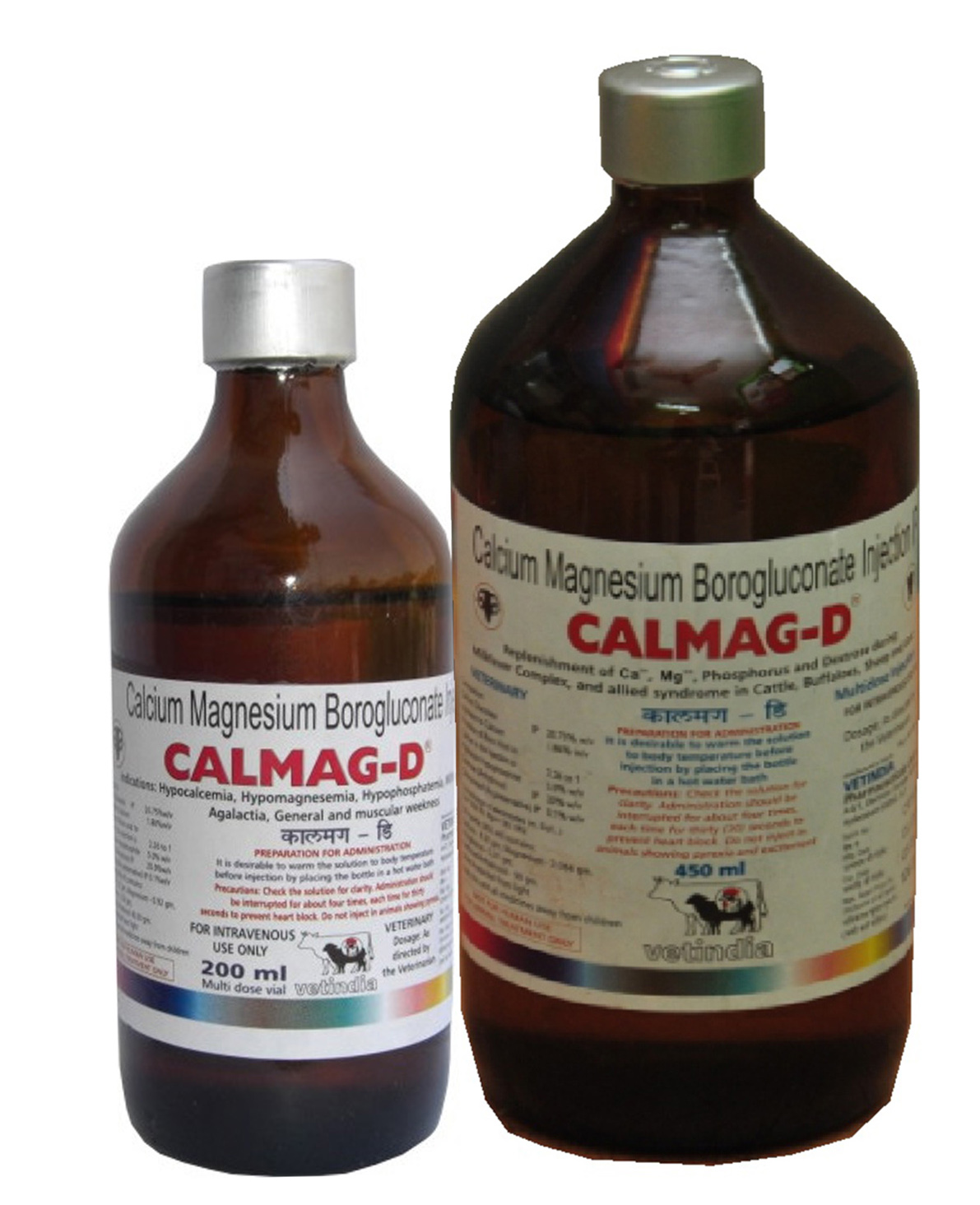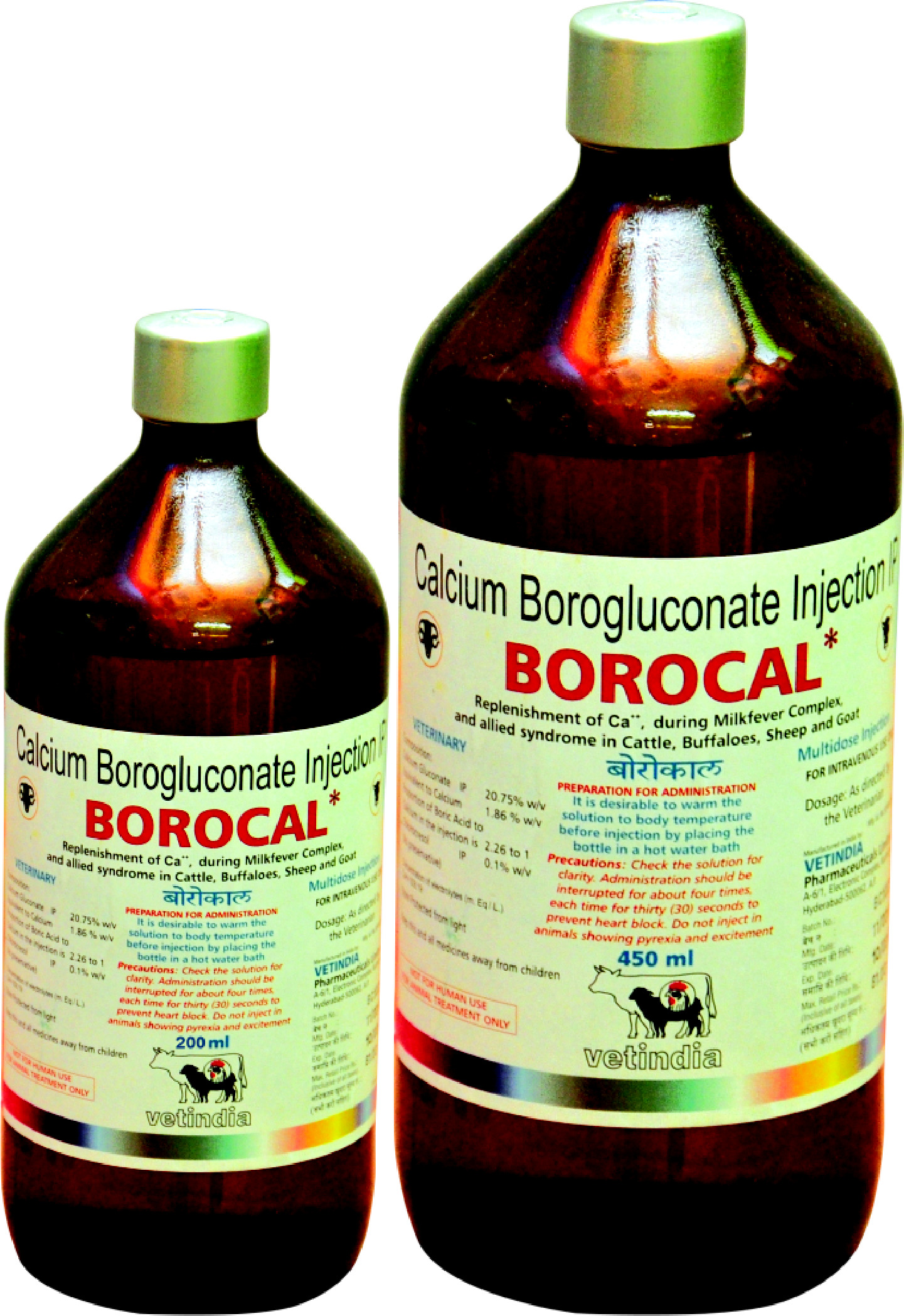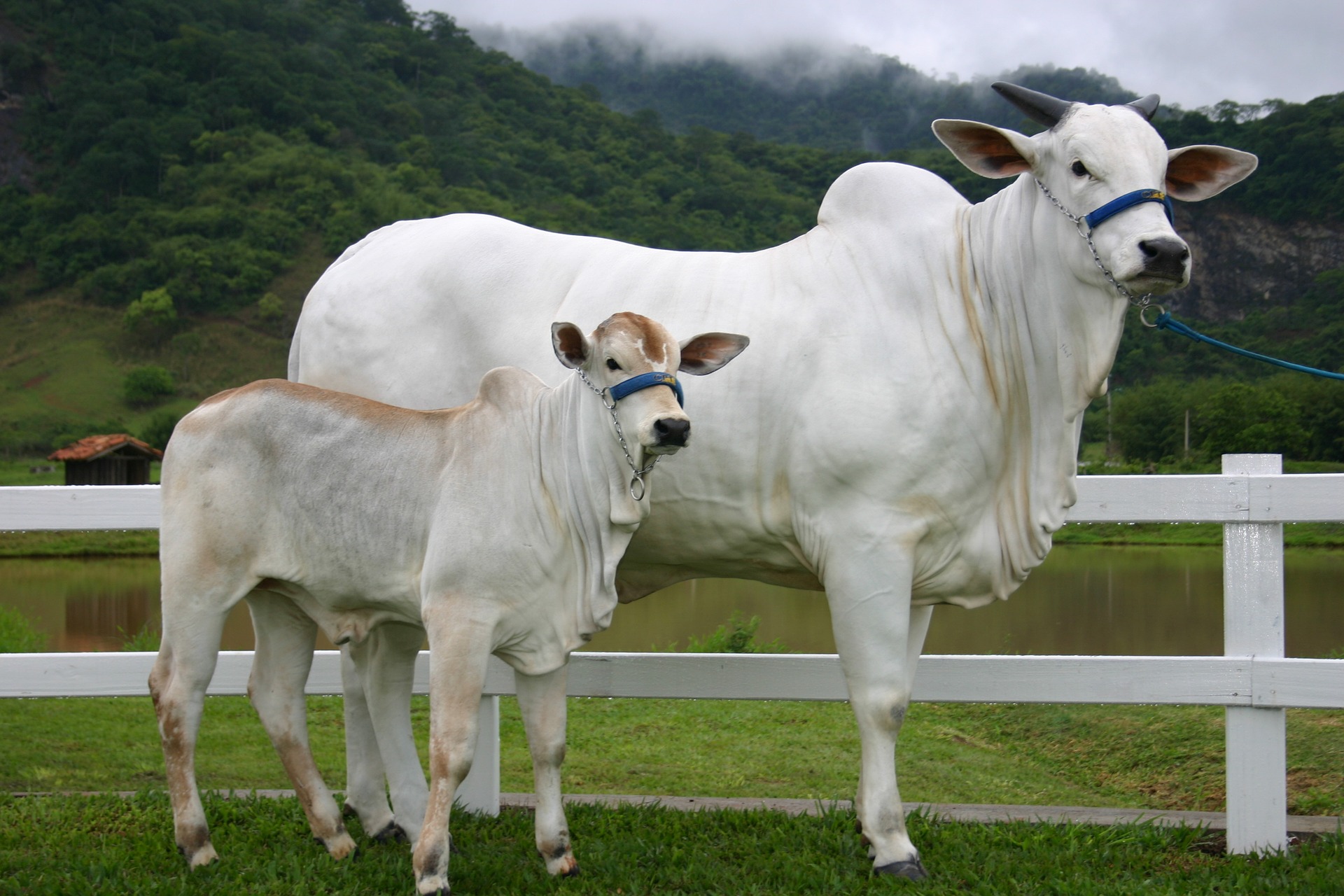
Composition:
- Calcium Gluconate - IP - 20.75%w/v
- Equivalent to calcium - 1.86%w/v
- Proportion of Boric Acid to
- Calcium in the injection is - 2.26 to 1
- Magnesium Hypophosphite - 5.0%w/v
- Dextrose (Anhydrous) -IP - 20.0%w/v
- Chlorcresol - IP - 0.1%w/v
- (As preservative)
Indications:
1. Milkfever complex in cattle and syndrome like a) Hypocalcaemia; b) Hypo magnesaemia; c) Hypophosphataemia; d) Hypoglycaemia e) Paraplagia.
Concentrated dextrose in Calmag – D helps to maintain protein and carbohydrate metabolism during lactation and combats acetonemia
Calmag – D offers calcium, Magnesium, Phosphorus and Dextrose in the most ideal proportion to meet normal requirement of the lactating cows and buffaloes
Dosage :
- Cattle and Buffaloes: 200 to 350ml
- Sheep and Goat: 35 to 75ml
Preparation and Administration:
It is desirable to warm the solution to body temperature before injection by placing the bottle in a hot water bath
Calmag – D is given slowly through intra-venous route. Administration should be interrupted for about 4 times. Each time thirty (30) seconds to prevent heart block.
Precautions:
- Check the solution for clarity, leakage and breakage.
- Don’t inject in animals showing pyrexia and excitement.
- Calcium and magnesium ions if injected rapidly may cause coronary depression.
Hence it is advisable to administer slowly with few interruptions.
Presentation:
Glass bottles of multidose 200ml & 450ml



